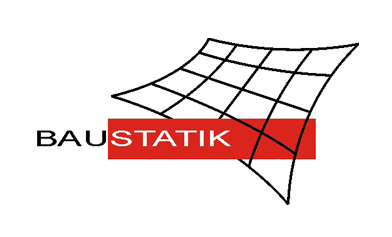History
The Institute for Structural Analysis – which was also called Institute for Structural Analysis and Measuring Technology from 1960 to 1989 – was founded as Chair for Structural Analysis in 1953. Bernhard Fritz was appointed as first ordinary professor in the field of structural analysis and held this position until his retirement in 1973. Since 1939, Fritz had already taken over major parts in teaching within the field of structural analysis as an employee of Ernst Gaber. Therefore, the roots of the Institute for Structural Analysis, back then being part of the Technical University Karlsruhe, lie within the field of bridge and railroad engineering. This was first represented under incorporation of structural analysis by Friedrich Engesser, whom Wilhelm Schachenmeier (1918 to 1920) and Ernst Gaber (1921 bis 1945) should follow. Otto Steinhardt, the successor of Ernst Gaber, continued to teach certain elements of structural analysis until 1953. In 1973, Udo Vogel was appointed ordinary professor of structural analysis, whom Werner Wagner succeeded in 1994. Since 2021 Steffen Freitag is the head of the Institute of Structural Analysis at KIT.
The institute’s research in the past seven decades was always closely related to the latest developments in structural engineering and contributed to these in multiple ways. Theoretical and experimental works in the following fields were conducted by and under Fritz: loss of friction in tendons of prestressed concrete, theory and calculations of prestressed steel structures, theory of composite structures (Günther Utescher). Also during this time, major contributions to the field of acoustic were made by apl. Prof. Löb, whose sound laboratory was included in the institute for some years, which is the reason why the name of the institute was enhanced with “measurement technology” in 1960. Vogel’s research mainly focused on nonlinear behavior of structures, particularly stability and theories of load bearing capacity of steel structures in the elastic-plastic zone. The results of these works and those of his research associates (i.a. Helmut Robin, former ordinary professor for structural analysis at TU Wien and Wolfgang Heil, former professor at the University of Applied Sciences, Karlsruhe) were partly included in modern European and German design guidelines for steel structures. The development of efficient computers lead to many new theoretical and practical activities in civil engineering under Werner Wagner. These include in particular modelling of planar load bearing structures, consideration of realistic material behavior, capturing new materials, computer aided form-finding for e.g. membrane structures as well as its implementation in practical procedures by use of the latest numerical methods. The origins of these works trace back to Karl Schweizerhof (former ordinary professor for mechanics in Karlsruhe) and were continued by Friedrich Gruttmann (initially ordinary professor for structural analysis and afterwards mechanics at TU Darmstadt) and Kai-Uwe Bletzinger (now ordinary professor for structural analysis at TU München). Due to these teaching and research activities, the institute’s young scientists were able to be appointed to further professorships (Carlo Sansour – currently professor of computational engineering, Bethlehem University, Sven Klinkel as ordinary professor for structural analysis and dynamics at RWTH Aachen and Ingo Münch as ordinary professor for structural analysis and dynamics at TU Dortmund).

